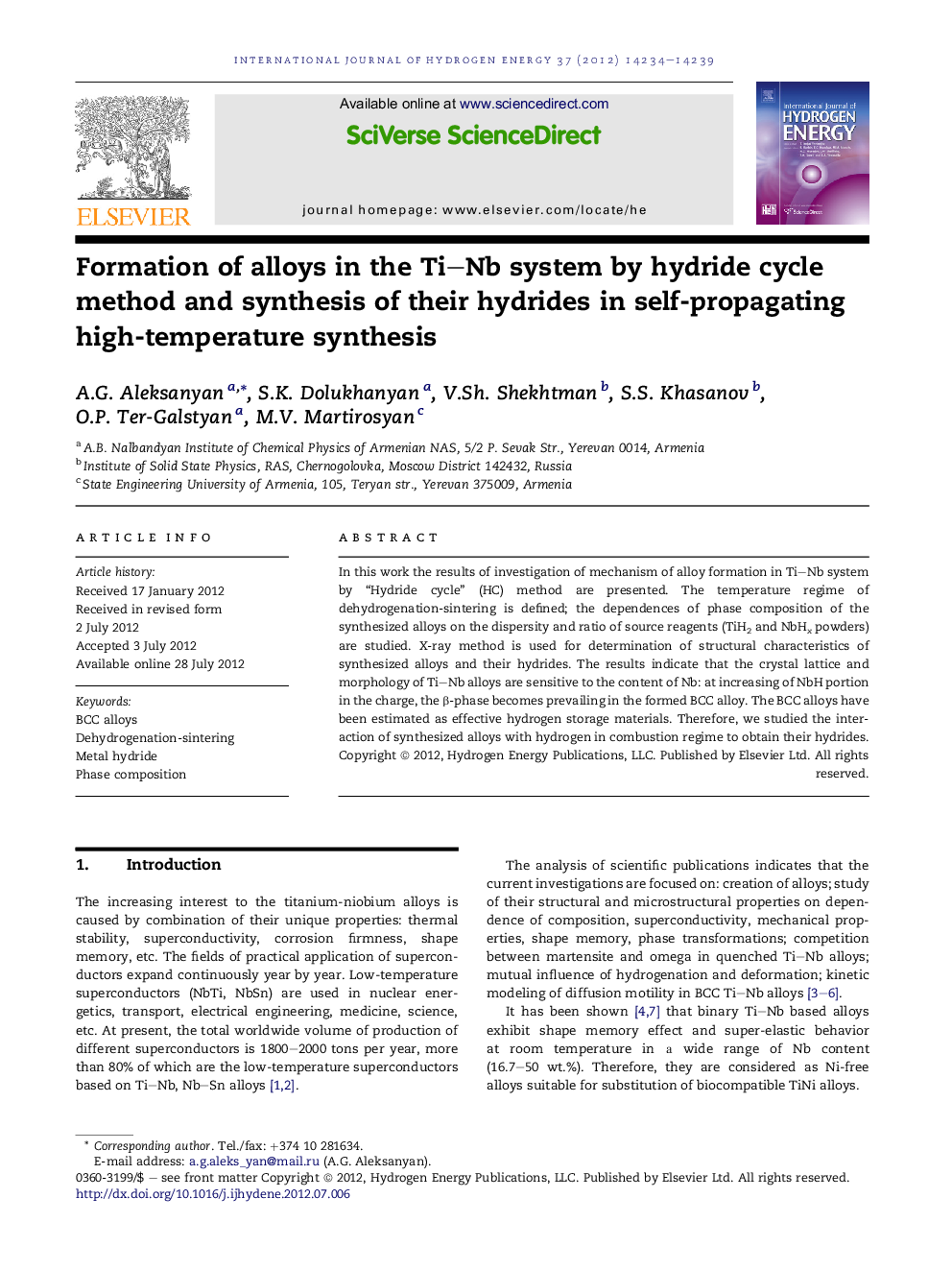| Article ID | Journal | Published Year | Pages | File Type |
|---|---|---|---|---|
| 1274768 | International Journal of Hydrogen Energy | 2012 | 6 Pages |
In this work the results of investigation of mechanism of alloy formation in Ti–Nb system by “Hydride cycle” (HC) method are presented. The temperature regime of dehydrogenation-sintering is defined; the dependences of phase composition of the synthesized alloys on the dispersity and ratio of source reagents (TiH2 and NbHx powders) are studied. X-ray method is used for determination of structural characteristics of synthesized alloys and their hydrides. The results indicate that the crystal lattice and morphology of Ti–Nb alloys are sensitive to the content of Nb: at increasing of NbH portion in the charge, the β-phase becomes prevailing in the formed BCC alloy. The BCC alloys have been estimated as effective hydrogen storage materials. Therefore, we studied the interaction of synthesized alloys with hydrogen in combustion regime to obtain their hydrides.
► A series of BCC Ti–Nb alloys and their hydrides were synthesized by HC method. ► The formation of an alloy proceeds in accordance with solid-phase mechanism. ► The temperature of transition of TiNb alloy to the superconductivity state is 9.85 K. ► The temperature of dissociation of Ti–Nb hydrides is lower than that of TiH2 and NbH2. ► In HC, the alloys of metals with different specific gravity can be synthesized.
